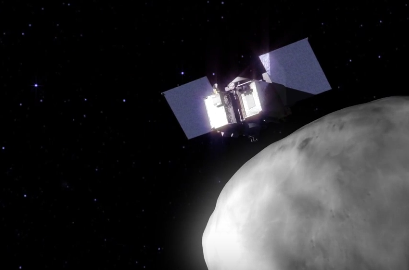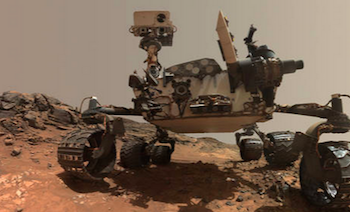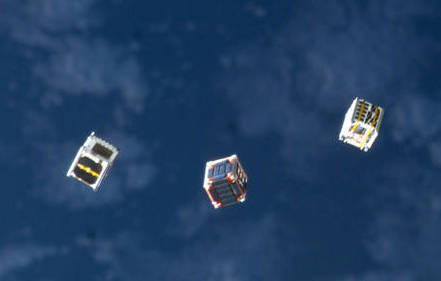Solar System: 2016 Preview
Solar System: 2016 Preview
What do we have planned for 2016? A return to the king of planets. A survey of mysterious Ceres. More postcards from Pluto. Anyone who follows solar system exploration in 2016 is in for quite a ride. Last year was one for the record books – and now here are 10 things to look forward to in the new year. See also: what we have planned agency wide for 2016.
Juno Arrives at Jupiter

July 4, 2016 is arrival day for the Juno mission, the first sent expressly to study the largest planet in the solar system since our Galileo mission in the 1990s. Humans have been studying Jupiter for hundreds of years, yet many basic questions about the gas world remain: How did it form? What is its internal structure? Exactly how does it generate its vast magnetic field? What can it tell us about the formation of other planets inside and outside our solar system? Beginning in July, we’ll be a little closer to the answers.
OSIRIS-REx Takes Flight

The OSIRIS-REx mission, short for Origins-Spectral Interpretation-Resource Identification-Security-Regolith Explorer, sets sail for an asteroid in September. The spacecraft will use a robotic arm to pluck samples from the asteroid Bennu to help better explain our solar system’s formation and even find clues to how life began.
Dawn Sees Ceres Up Close

After an odyssey of many years and millions of miles, in December the Dawn spacecraft entered its final, lowest mapping orbit around the dwarf planet Ceres. The intriguing world’s odd mountains, craters and salty deposits are ready for their close-ups. We can expect new images of the starkly beautiful surface for months.
Cassini Commences Its Grand Finale

In late 2016, the Cassini spacecraft will begin a daring set of orbits called the Grand Finale, which will be in some ways like a whole new mission. Beginning this year and extending into next, the spacecraft will repeatedly climb high above Saturn’s poles, flying just outside its narrow F ring 20 times. After a last targeted Titan flyby, the spacecraft will then dive between Saturn’s uppermost atmosphere and its innermost ring 22 times. As Cassini plunges past Saturn, the spacecraft will collect rich and valuable information far beyond the mission’s original plan.
New Horizons Sends More Postcards from Pluto

We have stared slack-jawed at the images and discoveries from last year’s Pluto flyby, but the fact is that most of the data that New Horizons collected remains on board the spacecraft. In 2016, we’ll see a steady release of new pictures — and very likely some expanded answers to longstanding questions.
Mars Missions March Forward

With five of our missions continuing their Martian quests, 2016 should be a good year for discoveries on the Red Planet.
Mars Odyssey
Mars Opportunity
Mars Reconnaissance Orbiter
Mars Curiosity
MAVEN
Mercury Transits the Sun

A transit is a very rare astronomical event in which a planet passes across the face of the sun. In May, Mercury will transit the sun, on of only thirteen Mercury transits each century on average.
LRO Keeps an Eagle Eye On the Moon

The Lunar Reconnaissance Orbiter (LRO) will extend its run in 2016, scanning the moon’s surface with its sharp-eyed instruments, investigating everything from lava tube skylights to changes at the Apollo landing sites.
Spacecraft Fly Under Many Flags

Our partner agencies around the world will be flying several new or continuing planetary missions to destinations across the solar system:
Akatsuki at Venus
ExoMars
Mars Express
Mars Orbiter Mission
Rosetta at Comet 67/P
Technology Demonstration Missions Push the Envelope

We’re always looking for new frontiers on distant worlds, as well as the technology that will take us there. This year, several missions are planned to take new ideas for a spin in space:
Deep Space Atomic Clock
NODES
LDSD
Make sure to follow us on Tumblr for your regular dose of space: http://nasa.tumblr.com
More Posts from Curiositytherover and Others

Solar Power Explorers
Four Common Wing Shapes in Birds
There are four general wing shapes that are common in birds: Passive soaring, active soaring, elliptical wings, and high-speed wings.
Passive soaring wings have long primary feathers that spread out, creating “slots” that allow the bird to catch vertical columns of hot air called “thermals” and rise higher in the air. Examples of birds with this wing type include eagles, most hawks, and storks. These Bald Eagles are classic examples of birds with passive soaring wings:

Active soaring wings are long and narrow, allowing birds to soar for a long time. However, these birds are much more dependent on wind currents than passive soaring birds. Examples of birds with this wing type are albarosses, gulls, and gannets. These California Gulls show good examples of the active soaring wing type:

Elliptical wings are good for short bursts of high speed. While they allow high speed, the speed cannot be maintained. Examples of birds that have this wing type are crows, ravens, blackbirds, sparrows, and thrushes such as the American Robin. These Common Ravens are good examples of birds with elliptical wings:

High-speed wings are long and thin, but not nearly as long as birds with active soaring wings. As the name suggests, birds with this wing type are incredibly fast, but unlike those with elliptical wings, these birds can maintain their speed for a while. Examples of birds that have this wing type are swifts, ducks, falcons, terns, and sandpipers. This Forster’s Tern is a good example of a bird with high-speed wings.

(http://www.birds.cornell.edu/education/kids/books/wingshapes)

The 7th Row of the Periodic Table is Finally Complete
And with a single announcement, millions of text books around the world have been made incomplete—out of date. This comes as four new elements are added to the periodic table, finally completing the table’s seventh row. The elements, 113, 115, 117, and 118 were discovered by scientists working in Japan, Russia, and America. Now, the International Union of Pure and Applied Chemistry (IUPAC, the body that is charged with overseeing standards in the world of chemistry) has confirmed the finds. Ultimately, these are the first elements to be added to the table since 2011. They were verified in an announcement released on Dec. 30.
Learn more: http://futurism.com/links/the-7th-row-of-periodic-table-is-finally-complete/
Iran Interested in Purchase of Russian Satellites
Moscow (Sputnik) Nov 20, 2015 Iran intends to cooperate with Russia in the area of aerospace after economic sanctions are lifted, to include satellites, weather satellites, and remote sensing devices, Russian Deputy Prime Minister Dmitry Rogozin said Thursday. “Iran is interested in our plans [new federal aerospace program], they want to find their place in the market of remote sensing devices. They want their own weat Full article






Almost a month ago, the spaceflight company Blue Origin sent a rocket up to the edge of space and then guided it gracefully back down to earth, intact. It was a historic first.
But Blue Origin’s major competitor, SpaceX, was quick to point out that the rocket wasn’t going fast enough (or sideways enough) to place a satellite into orbit - just 4,600 kph (~2,860 mph). It went straight up, and then straight down.
Now, SpaceX has managed to put 11 satellites in orbit with a “reusable” rocket. Their rocket didn’t just go up and down - it reached a horizontal velocity of 6,000 kph (3,600 mph) before returning to earth. If SpaceX is able to refurbish the rocket and use it in another launch, they’ll have figured out a way to dramatically reduce the cost of spaceflight.
Here’s the full webcast. And here’s the full story.
Video credit: SpaceX

We normally post our tech news roundups on Fridays, but due to turkey, football, and lots of napping, we’re publishing it today instead. Enjoy!
1. The right drones for everyone this holiday season Love is in the air, and here’s a list of UAVs you can use to catch it. There’s never been a better reason to sit around while your relatives drone on and on. Really. With gifts like these the holidays will fly right by. via: Quartz
2. New tech can wirelessly charge your electronics with a standard Wi-Fi router There’s a good reason your Wi-Fi router is always shooting dirty looks at your laptop’s power cord. But rather than stoop to their level, routers everywhere are taking up the slack. Try to be sympathetic when your power cord finally winds up jobless. It’s bound to come as a shock. via: BGR 3. The Pickle Index is a Delightfully Weird, App-Driven Novel Like No Other Immersive multimedia experiences are becoming more and more advanced every day, but there are plenty of people who still use monomedia to get their virtual realities. With The Pickle Index, techies and bookworms will finally have something to talk about if they’re both forced to interact with other humans. via: WIRED
4. Circuit Board Tattoos That Actually Work Will Make Your Cyborg Fantasies Come True Do yourself a favor and only get tattoos in languages that you understand. Otherwise you might end up with a bunch of spurious output, and it’s going to take forever to find that missing comma. via: Gizmodo

Patricia Cowings (b. 1948) is an aerospace psychophysiologist, and the first African American woman trained as an astronaut by NASA. She conducted important research over many years at the NASA Ames Research Center in the fields of psychology and physiology.
Her research allowed cosmonauts to learn voluntary self-control to bodily responses, and cure motion sickness in space. She has trained space crews and helped improve their performance and wellbeing during missions. She has received several awards for her contributions to technology and development.

Total Recall Sounds Great, But Some Things Should Be Forgotten
Imagine never again forgetting where you parked your car, or that last item you had on your grocery list, or why you walked into this room anyway. If you trust media stories about research currently under way at Defense Advanced Research Projects Agency (DARPA) to build an implantable device to restore memory, you might not have to worry about these memory lapses in the future.

Meet Surena III: University of Tehran Unveils Its New Humanoid Robot
Researchers from the University of Tehran unveiled the new generation of their humanoid robot called Surena III. The robot stands 1.9 meters tall (6.2 feet) and weighs 98 kilograms (216 lb). It is also equipped with numerous sensors that includes a Kinect-based 3D vision module, and is powered by 31 servomotors. Surena III is capable of walking up and down ramps and stairs, and along irregular surfaces up to a speed of .2m/s (about 8 inches a second).
So perhaps the robot won’t be running any marathons anytime soon, but it’s still pretty remarkable. Plus, the robot was designed for other purposes besides speed.
Read more at: http://futurism.com/links/meet-surena-iii-university-of-tehran-unveils-its-new-humanoid-robot/
-
 lakesidebear liked this · 6 years ago
lakesidebear liked this · 6 years ago -
 poetcc-things liked this · 8 years ago
poetcc-things liked this · 8 years ago -
 thisisacatperson liked this · 8 years ago
thisisacatperson liked this · 8 years ago -
 lemonlimekodkod liked this · 9 years ago
lemonlimekodkod liked this · 9 years ago -
 astcrownaut liked this · 9 years ago
astcrownaut liked this · 9 years ago -
 parkrrpeter-blog reblogged this · 9 years ago
parkrrpeter-blog reblogged this · 9 years ago -
 angusarcher reblogged this · 9 years ago
angusarcher reblogged this · 9 years ago -
 smg1ne liked this · 9 years ago
smg1ne liked this · 9 years ago -
 voren reblogged this · 9 years ago
voren reblogged this · 9 years ago -
 ultrainfinitequest liked this · 9 years ago
ultrainfinitequest liked this · 9 years ago -
 big-blue-world liked this · 9 years ago
big-blue-world liked this · 9 years ago -
 secretagentpeptidebond reblogged this · 9 years ago
secretagentpeptidebond reblogged this · 9 years ago -
 heyitssnickers liked this · 9 years ago
heyitssnickers liked this · 9 years ago -
 crimsonfirebolt reblogged this · 9 years ago
crimsonfirebolt reblogged this · 9 years ago -
 the-evermind liked this · 9 years ago
the-evermind liked this · 9 years ago -
 swoz reblogged this · 9 years ago
swoz reblogged this · 9 years ago -
 youwontcatchmealive reblogged this · 9 years ago
youwontcatchmealive reblogged this · 9 years ago -
 chasingtheskies reblogged this · 9 years ago
chasingtheskies reblogged this · 9 years ago -
 ookiki reblogged this · 9 years ago
ookiki reblogged this · 9 years ago -
 vkgyarukei reblogged this · 9 years ago
vkgyarukei reblogged this · 9 years ago -
 vkgyarukei liked this · 9 years ago
vkgyarukei liked this · 9 years ago -
 ooobvsydu liked this · 9 years ago
ooobvsydu liked this · 9 years ago -
 veechuu reblogged this · 9 years ago
veechuu reblogged this · 9 years ago -
 veechuu liked this · 9 years ago
veechuu liked this · 9 years ago -
 actiaslunaris reblogged this · 9 years ago
actiaslunaris reblogged this · 9 years ago -
 belldilla reblogged this · 9 years ago
belldilla reblogged this · 9 years ago -
 belldilla liked this · 9 years ago
belldilla liked this · 9 years ago -
 megaradcollectionwolfthings-blog liked this · 9 years ago
megaradcollectionwolfthings-blog liked this · 9 years ago -
 ofirablack liked this · 9 years ago
ofirablack liked this · 9 years ago -
 inconstantsearchofperfection liked this · 9 years ago
inconstantsearchofperfection liked this · 9 years ago -
 msfizicks reblogged this · 9 years ago
msfizicks reblogged this · 9 years ago -
 jackalope-wishes liked this · 9 years ago
jackalope-wishes liked this · 9 years ago -
 reallymadscientist reblogged this · 9 years ago
reallymadscientist reblogged this · 9 years ago -
 feeshrfriendz liked this · 9 years ago
feeshrfriendz liked this · 9 years ago -
 tendersushi liked this · 9 years ago
tendersushi liked this · 9 years ago -
 analgesicsleep reblogged this · 9 years ago
analgesicsleep reblogged this · 9 years ago -
 potterness liked this · 9 years ago
potterness liked this · 9 years ago -
 rainyphoenix22 reblogged this · 9 years ago
rainyphoenix22 reblogged this · 9 years ago -
 ofbooksandcleverness reblogged this · 9 years ago
ofbooksandcleverness reblogged this · 9 years ago -
 mossy-bean liked this · 9 years ago
mossy-bean liked this · 9 years ago -
 manimal08-blog reblogged this · 9 years ago
manimal08-blog reblogged this · 9 years ago
